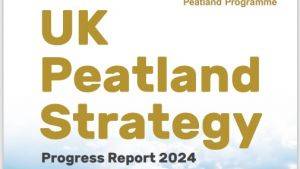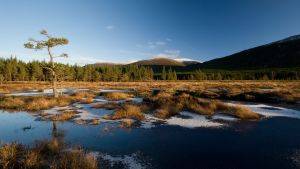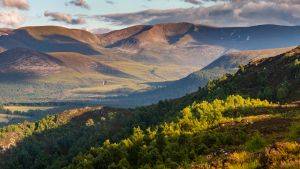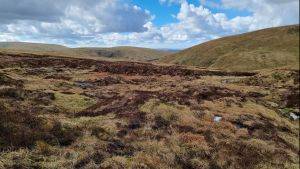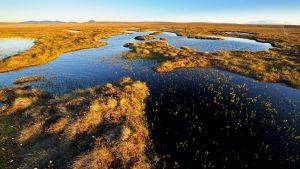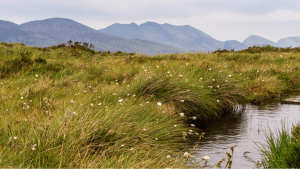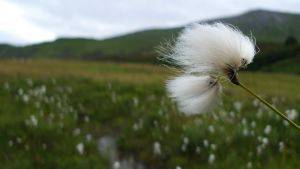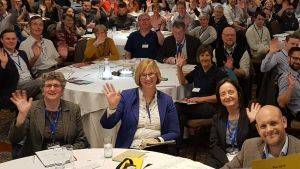Peatland Restoration for Enjoyment ; Allowing visitors to enjoy a newly-restored bog and the Marble Arch Caves
Introduction
The Marble Arch caves are a major tourist attraction and in 1989 severe flooding raised concern about visitor safety and the threat to tourism. Investigations revealed that the cause of the flooding was changes to the flow of water off the Cuilcagh Mountain. Commercial peat cutting, over –grazing, burning of vegetation and quad bike tracks had all contributed to this
Description
Cuilcagh Mountain (2,700 ha) is situated in Fermanagh in the west of Northern Ireland along the border with the Irish Republic. It is one of the largest expanses of blanket bog in Northern Ireland formed on a relatively high elevation upland landscape. In the late 1980s, this bog habitat was in bad shape. Years of overgrazing, mechanized peat harvesting and other mistreatment had damaged the sensitive bog ecosystem.For generations peat has been cut by hand as a source of fuel on Cuilcagh Mountain. The peat cutters were careful to remove the living layer, or sods of vegetation, off the bog surface before cutting the peat. After cutting, they replaced the sods of vegetation on the exposed peat surface helping to ensure that the bog was not irreparably damaged. However, since the 1980’s, machines have been used all over Ireland to cut peat. These machines are attached to the back of a tractor and one person can now cut in a few hours what it would have taken a week to cut by hand. An area of 28 ha of blanket bog within Cuilcagh Mountain Park has been severely damaged by mechanical peat extraction. In addition, 11km of drains were dug within the area.
Project Aims
Many Government bodies, conservation groups and academics have had to work together to repair the damage to the blanket bog and protect it for the future. The restoration process is ongoing and it may take many years before the vegetation recovers fully. Scientific monitoring by Queen’s University Belfast ensures that restoration action and development is recorded, so that experiments can be repeated and the work can inform others restoration projects.
Restoration Delivered
The visitors centre at the Marble Arch Caves includes displays on the story of the Cuilcagh and its restoration. Water level monitoring stations were established upstream of the Marble Arch Caves and sophisticated measuring equipment warns of increasing water levels, ensuring the safety of visitors to the caves. In addition, a geotextile-lined aggregate path, sometimes called a “floating trail,” allows hikers to enjoy the now-restored bog without damaging it. Similar paths are used all over Ireland, Scotland, and other bog-laden countries.
Site Activity
Marble Arch caves are a series of natural limestone caves near the village of Florencecourt in County Fermanagh. Water from Culicagh mountain drains into the caves, and the damage to the bog there meant water drained faster into the caves, raising the risk of flooding. Restoring the bog habitat on the slopes of Cuilcagh Mountain back to its fully functioning form was essential to ensure the safety of visitors to Marble Arch Caves. The Fermanagh District Council initiated a long-term project in conjunction with the RSPB using EU LIFE and UK Heritage Lottery funding. In 1998, the Council set up the Cuilcagh Mountain Park. The aim was to protect unaffected areas of the blanket bog and increase awareness of this rare habitat. This involves blocking drains using a variety of materials including hay and straw bales; recycled plastic and wooden sheeting;forestry ‘brash’; and the peat itself.
Project Name: Peatland Restoration for Enjoyment ; Allowing visitors to enjoy a newly-restored bog and the Marble Arch Caves
Organisation / Lead partner: Fermanagh District Council
Approximate area covered: 2500 ha
Predominately: Upland
Peat Habitats: Blanket bog

